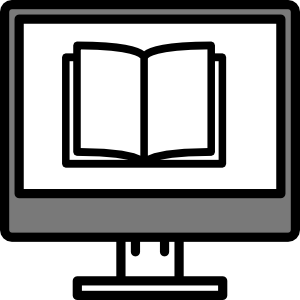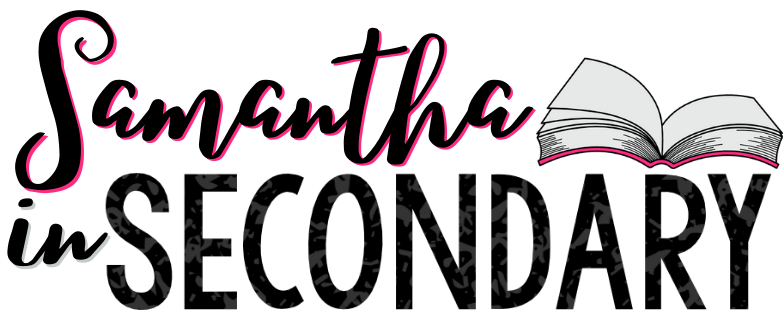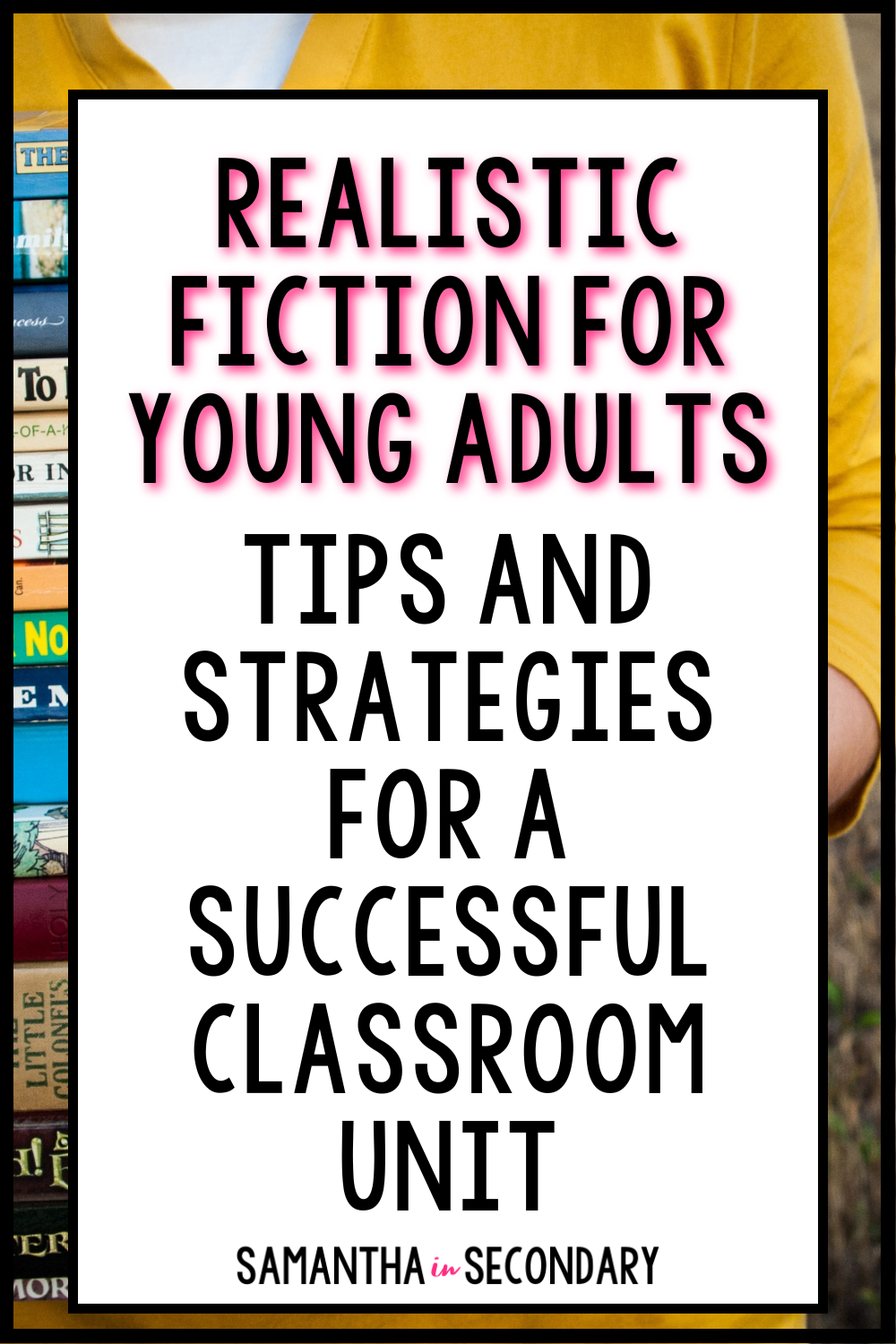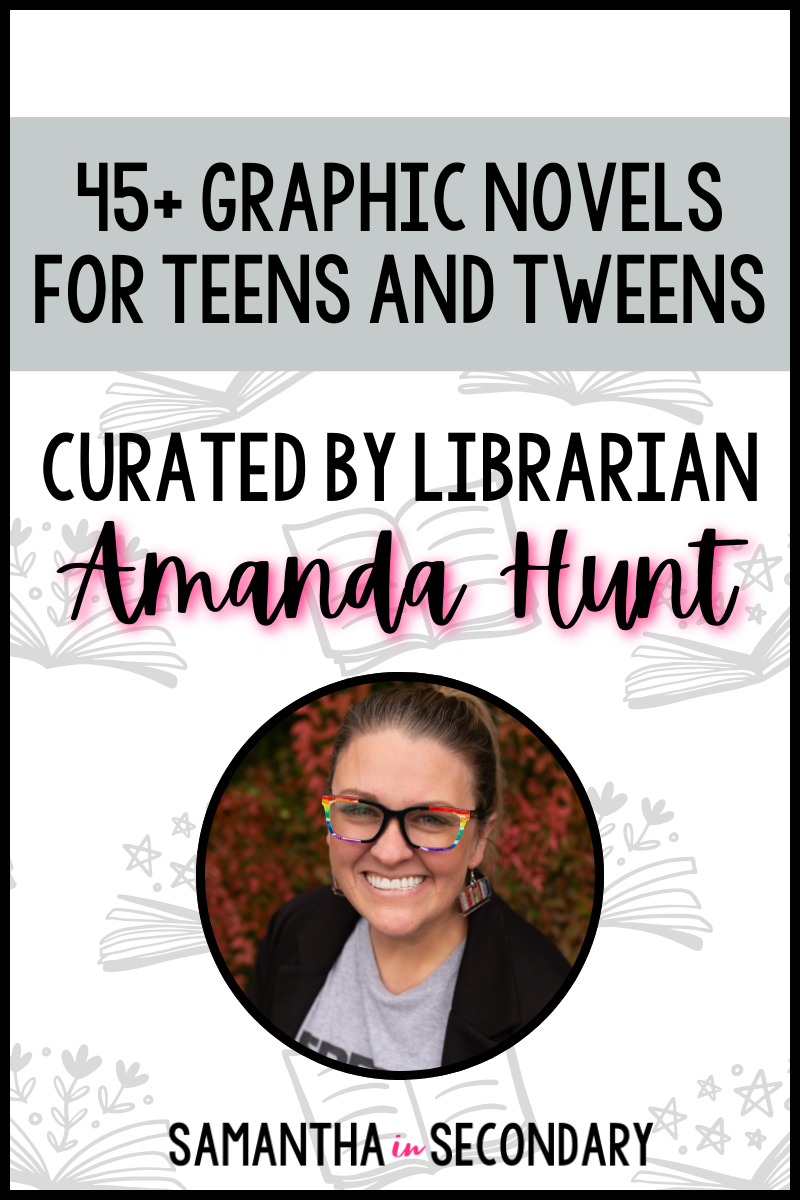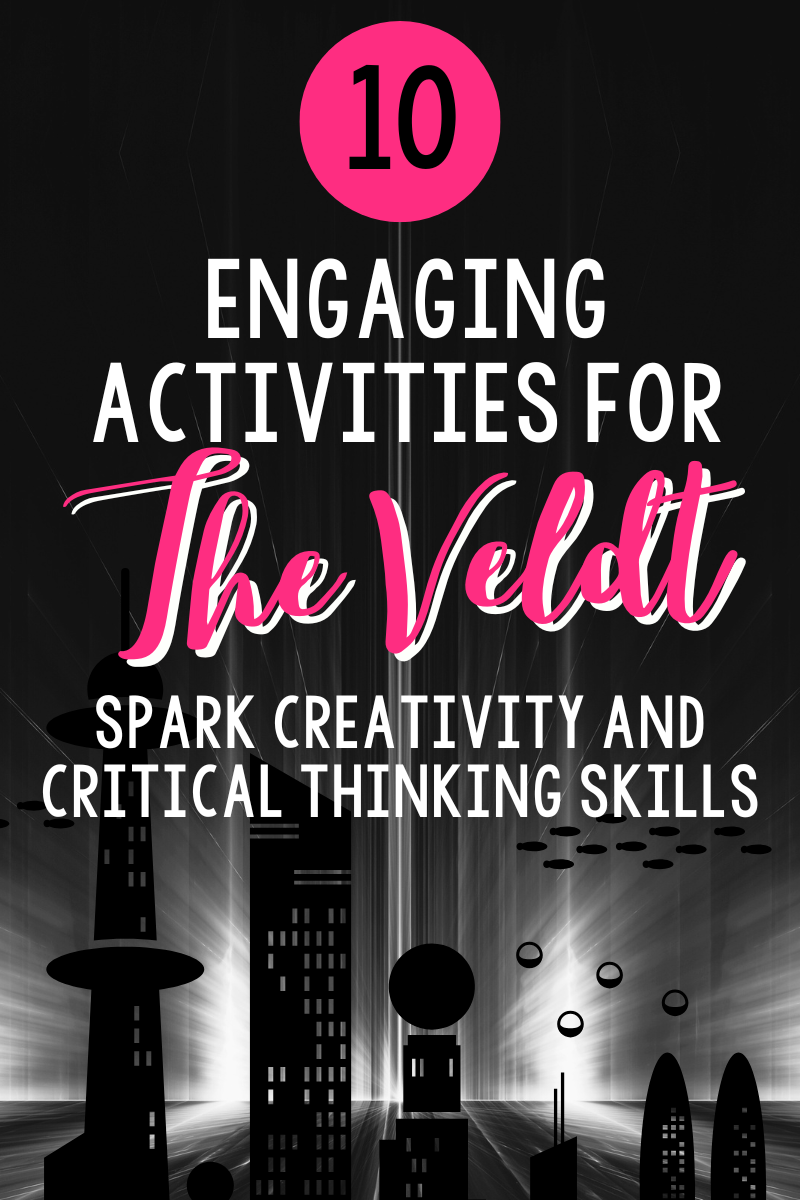Creating a historical fiction unit is one of my favorite ways to bring the past to life in my classroom. In this blog post, I’ll take you through the steps I use to build a dynamic unit that keeps students engaged from start to finish. First, I like to begin with a quick dive into the genre itself, exploring how historical fiction combines real events with fictional stories. By understanding this foundation, students get a sense of the power of storytelling to illuminate history in ways that feel personal and relatable.
Once they grasp the basics, it’s time to move on to the fun part: choosing the right books. I’ll share tips for selecting titles that challenge students at different levels and match a variety of interests. With books in hand, we dive into thoughtful discussions that help students connect with the stories and the historical events they bring to life. And to wrap up the unit, I love using an authentic assessment—something project-based that lets students creatively showcase their learning. From writing a character’s diary to designing an exhibit, these projects allow students to dig deeper and make the learning stick. So, let’s jump in and build a historical fiction unit that’s not only educational but truly memorable!
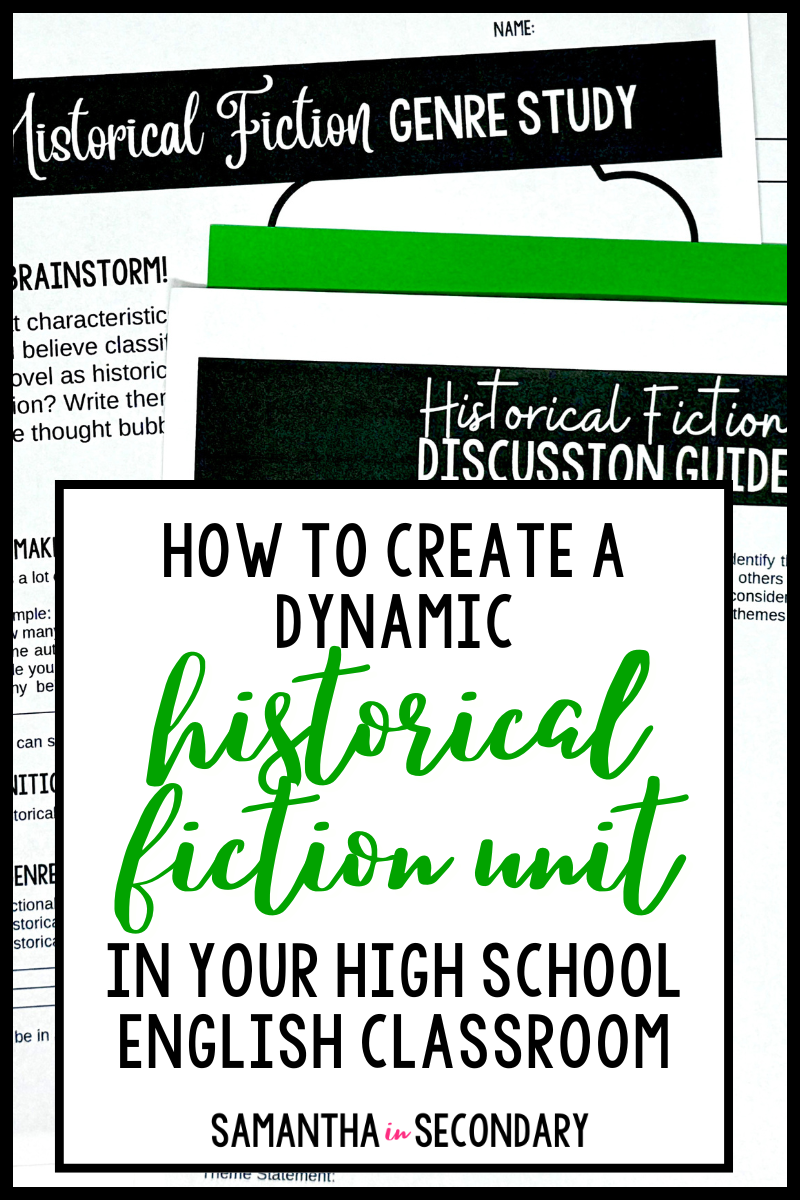
#1: Introduce Your Historical Fiction Unit
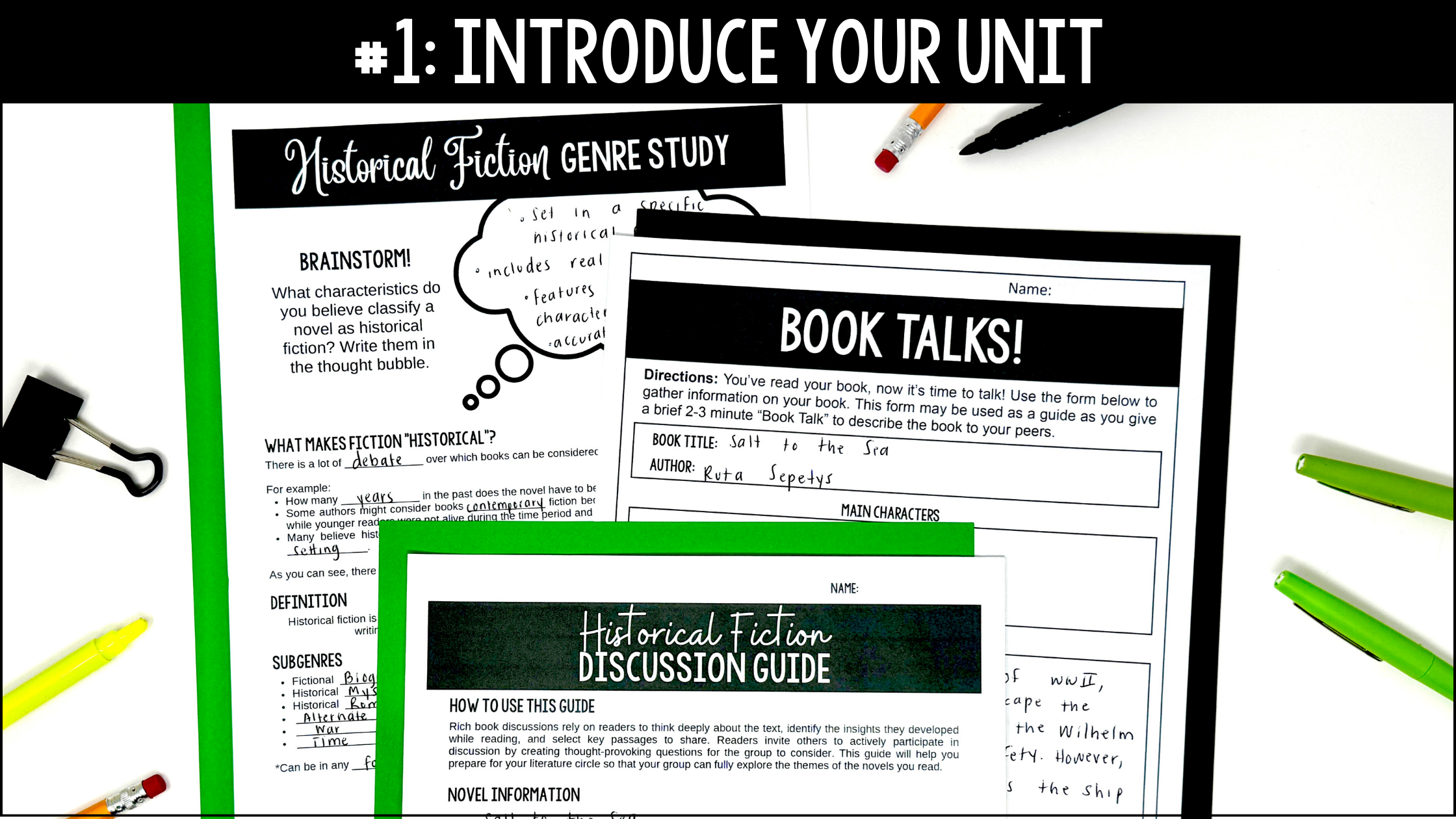
Starting your historical fiction unit with a strong introduction can set the stage for a meaningful experience. I like to kick things off with an overview of the genre itself, guiding students to understand how historical fiction blends factual events with imaginative storytelling. We talk about how authors of historical fiction research extensively to portray people, settings, and events accurately, while also creating relatable characters and engaging plots. I’ll often use a few short excerpts or book trailers to give students a taste of what’s to come and discuss why historical fiction is such a powerful way to learn about history. Framing the genre like this builds excitement and lets students know that they’re not just reading a story—they’re stepping back in time.
#2: Choose Great Historical Fiction Titles
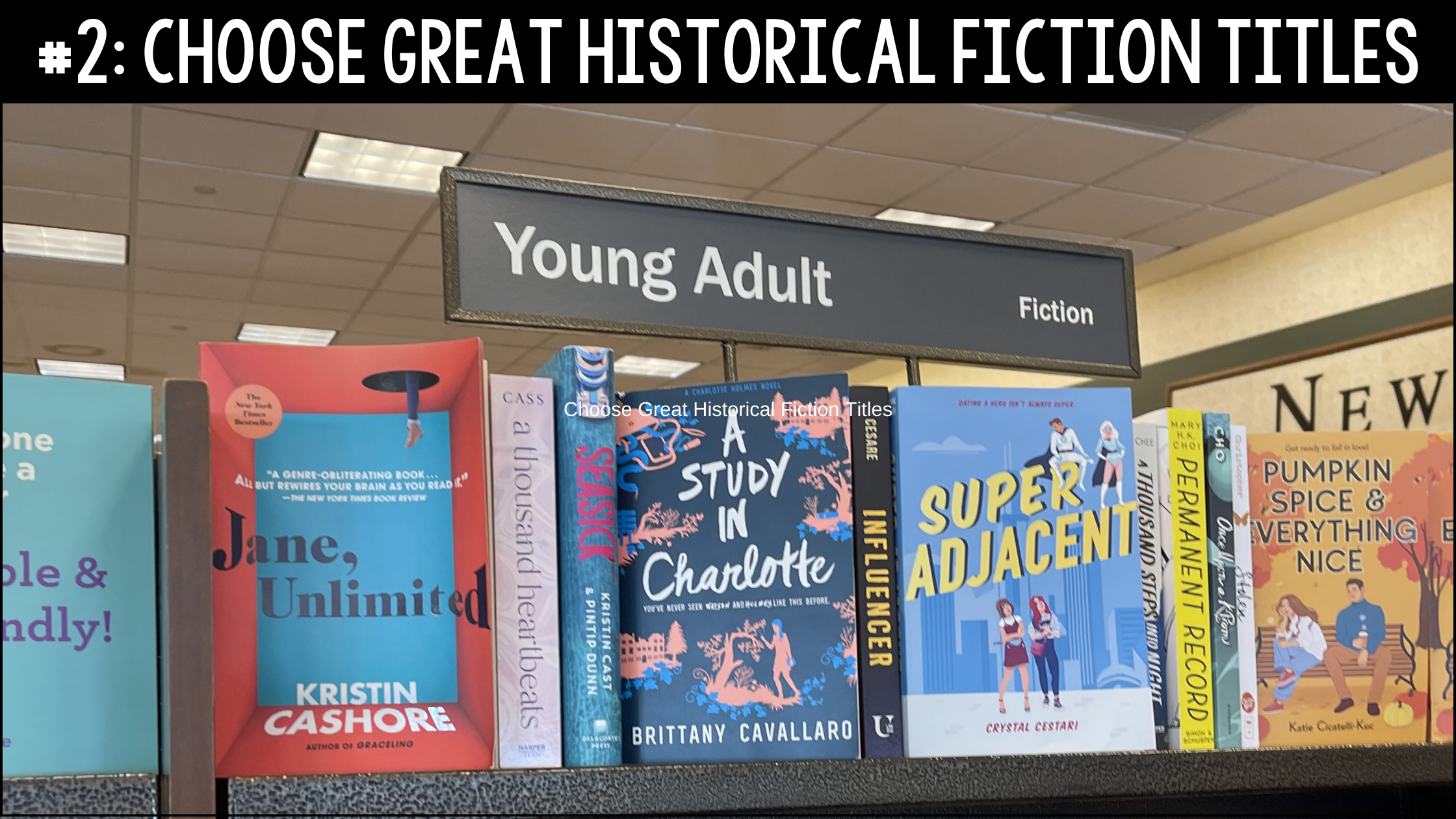
Selecting the right books is one of the most important steps in a successful historical fiction unit. I always consider my students’ reading levels and interests, making sure there’s enough variety to appeal to different personalities and abilities. I also try to choose books that cover a range of historical periods and perspectives. Whether it’s Code Talker by Joseph Bruchac for a look at Navajo code talkers in WWII or Chains by Laurie Halse Anderson for a glimpse into life as an enslaved person during the American Revolution, each title brings unique insights and opens up different discussions. When students feel connected to their book choice, they’re more likely to engage deeply, so giving them some say in what they read can be a game-changer for participation and interest. If you’re looking for specific historical fiction titles that you can add to your lesson plans, click here to listen to episode 12 of my podcast Creating Joyful Readers where I give you five specific historical fiction recommendations based on students’ personalities.
One activity I love to use with this kind of unit is book talks. Book talks are a fantastic way to build a community of readers in the classroom. Essentially, a book talk is when a student gives a short, engaging presentation on a book they’ve read, sharing enough about the plot, characters, and themes to spark curiosity without giving away spoilers. These talks help students develop presentation skills and critical thinking, and they allow peers to discover new books that might interest them. I like to set aside regular time for book talks, making them part of our weekly or monthly routine. We discuss what makes a good book talk, from tone of voice to highlighting a favorite scene, so each student can practice the art of recommendation. It’s amazing to see students light up when they’re talking about a book they loved and watching classmates eagerly jot down titles to add to their own reading lists. This activity creates a buzz about reading and helps even the most hesitant readers find books they’ll enjoy. To learn more about book talks, click here to read my full blog post.
If you’re looking to make book talks easy and effective in your classroom, my Book Talks Instructions and Templates resource is designed to do just that. This ready-to-use resource includes clear teacher instructions, two different student worksheet versions, and a helpful Google Slides companion to support digital learning. It’s perfect for choice reading, literature circles, or independent reading projects and helps students gain confidence in sharing their book insights. With these templates, your students will not only learn to give enthusiastic book recommendations but also improve their comprehension skills. Click here to check out the resource. It’s the perfect addition to your teaching toolkit.
#3: Read and Discuss the Titles
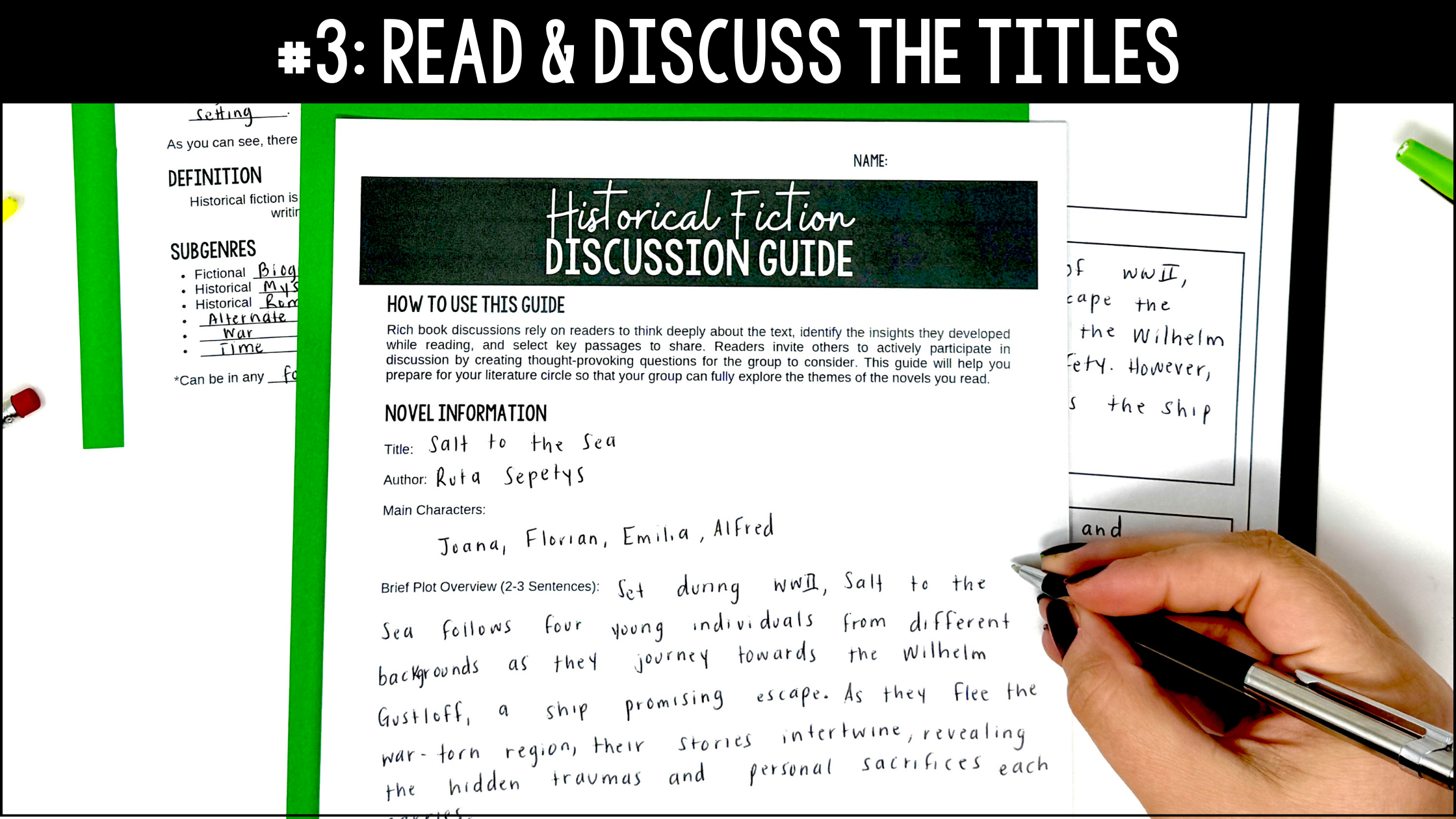
Reading historical fiction is just the beginning; it’s the discussions that really bring these stories to life. After students start their books, I use a mix of whole-class, small-group, and partner discussions to help them make connections to the material. We explore questions about characters, historical settings, and the events in the stories, drawing comparisons to our own world. I often ask students to reflect on what surprised them, what felt relevant, and what perspectives they might not have considered before. These discussions not only deepen understanding but also help students see the value of diverse viewpoints and experiences throughout history. I find that students are often eager to share their insights, and these conversations are where the true learning—and excitement—happens.
If you need a little help getting your students talking meaningfully about historical fiction, try my Historical Fiction Discussion Guide. This guide offers a clear structure to help students dig deeper into the genre, from selecting key passages to generating thoughtful, open-ended questions for group discussion. It includes everything you need to run a successful literature circle, with sections for students to explore the novel’s setting, themes, and character insights, plus self-evaluation tools that promote reflection and accountability. Whether you’re working with a full-class novel or giving students a choice of historical fiction books, this guide will spark lively, focused discussions that enhance comprehension and engagement. Click here to view the resource.
#4: Complete a Unique Assessment
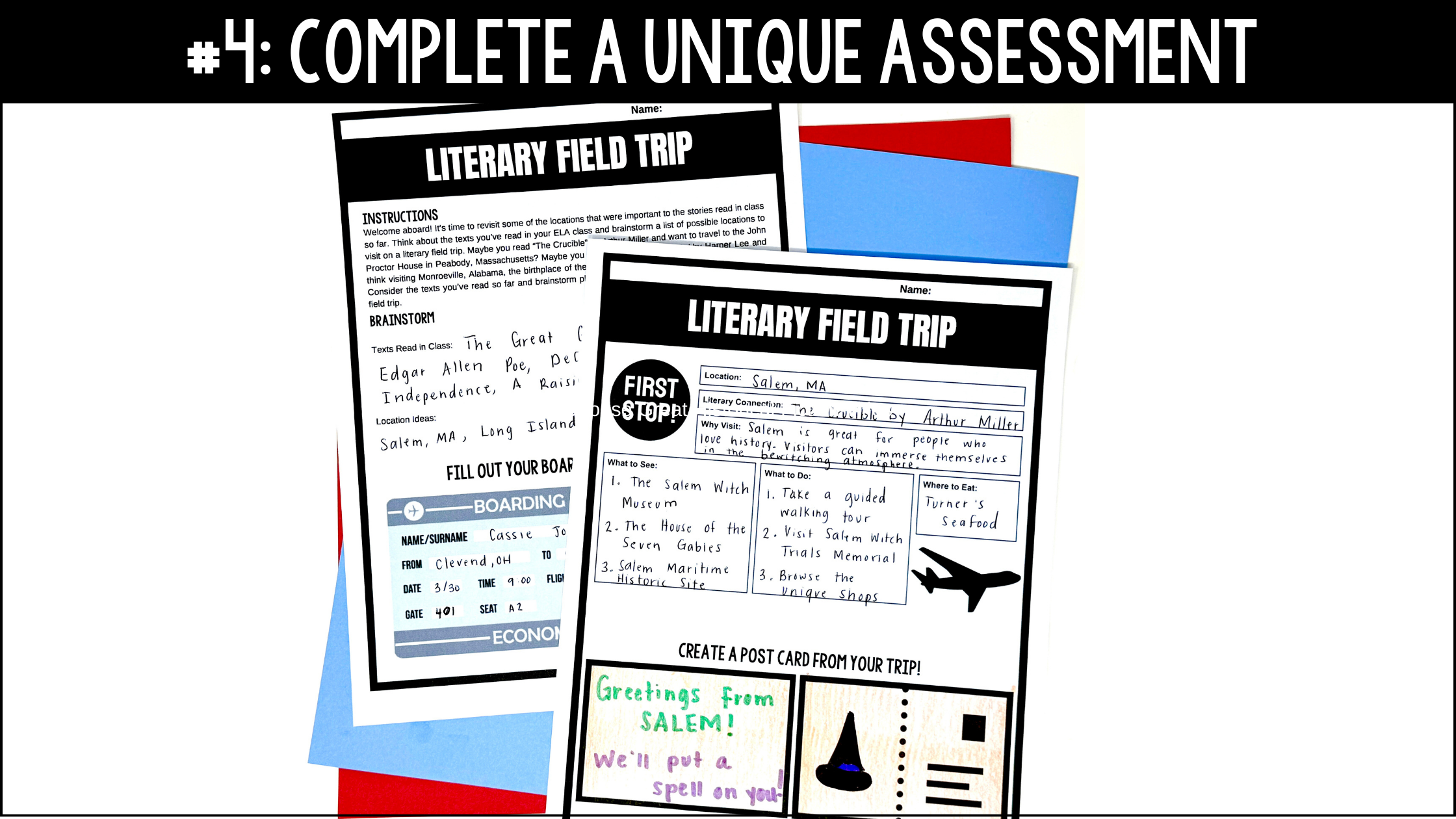
To wrap up the unit, I like to move beyond traditional tests or book reports and use project-based assessments that are both meaningful and creative. These projects allow students to dive deeper into the historical context and characters of the novel while bringing their own ideas and interpretations to the table. One engaging option is the Setting Writer’s Craft Project, where students analyze the author’s use of setting and then create their own scenes, bringing the historical setting to life through descriptive writing. Another favorite is the Literary Field Trip, which allows students to research real-world locations from the novel and design an interactive experience that transports their peers to that time and place. These authentic, hands-on assessments provide a memorable way for students to showcase what they’ve learned and demonstrate their understanding in ways that go beyond just facts and dates. The creativity and effort that come through in these projects clearly show how deeply students have connected with the material.
Check Out My Full Historical Fiction Unit
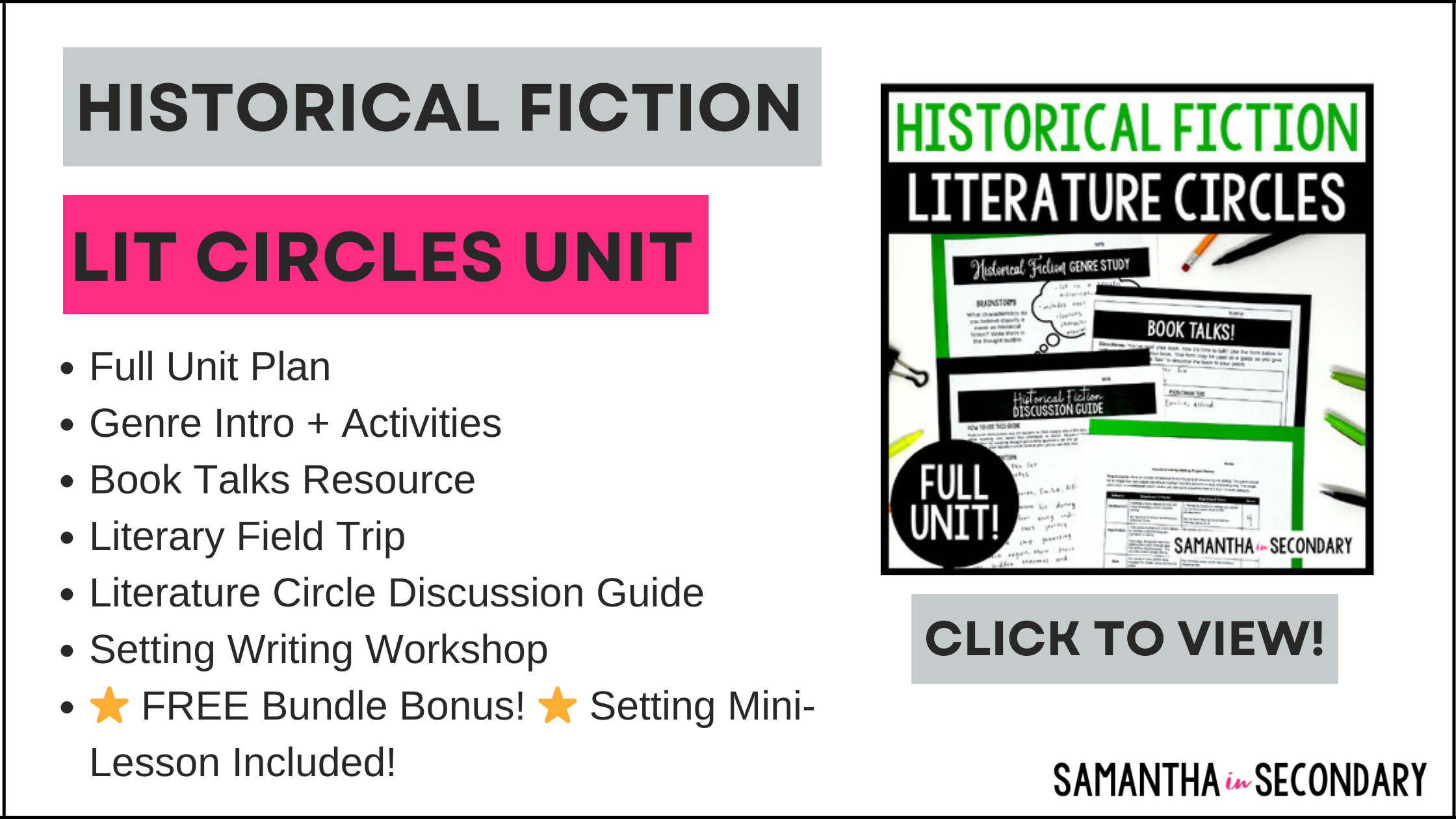
If you’re looking to introduce your students to the fascinating world of historical fiction, this literature circles unit is a perfect fit. It offers a flexible approach that works seamlessly with your existing curriculum or as a standalone mini-unit. Your students will dive into the genre with engaging activities, from choosing their own books to exploring the key elements of historical fiction. They’ll get hands-on experience with a genre-based discussion guide, a creative literary field trip project, and a setting writing workshop. Plus, with a unit guide to keep everything on track, you’ll have all the resources you need to foster a deeper understanding of historical fiction in your classroom. Click here to check it out!
Building a historical fiction unit offers a unique opportunity to bring history to life in ways that captivate students’ imaginations. By introducing the genre, carefully selecting diverse books, facilitating insightful discussions, and using creative assessments, you can create a dynamic learning experience that resonates with students. Historical fiction not only deepens students’ understanding of the past but also encourages empathy and critical thinking. With these strategies, you can inspire students to see history through a new lens, making it both engaging and memorable. I hope these tips help you design a unit that sparks curiosity and fosters a love for both reading and history.
Happy reading!

Some links referenced here are affiliate links. Supporting this blog through these links comes at no additional cost to you. For more information on my affiliate policy, please click here.


